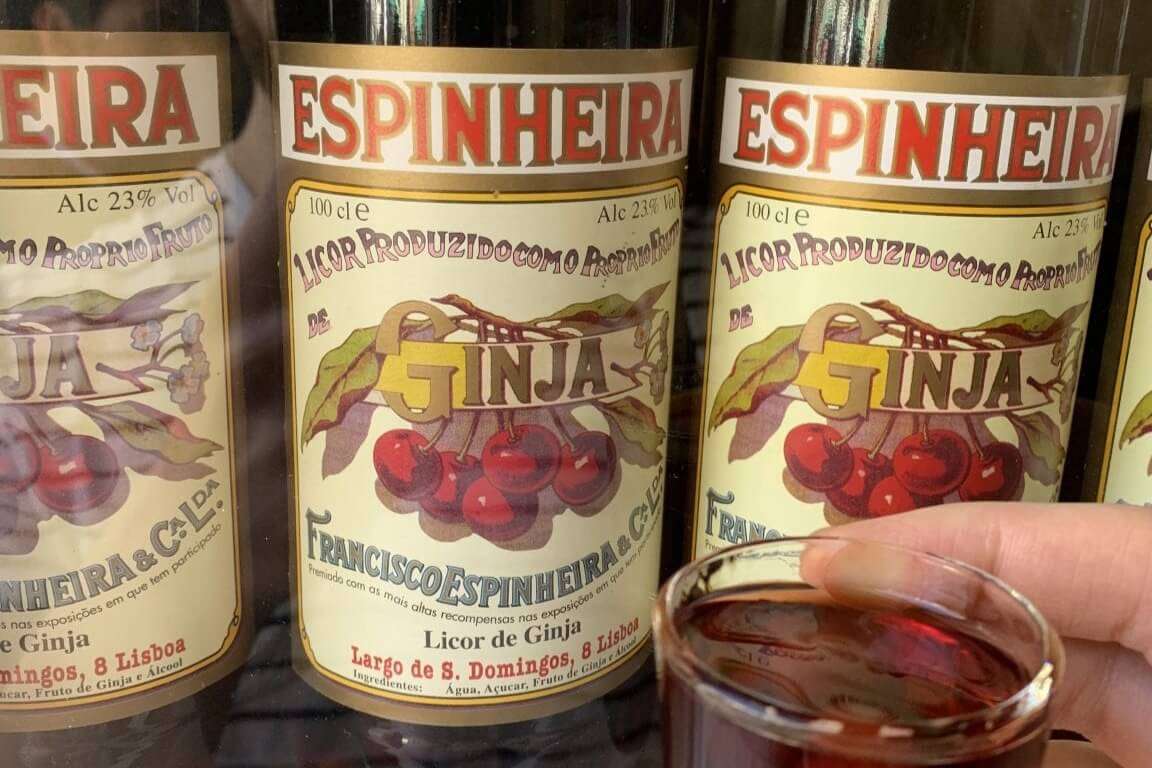Ginjinha: The History of this Delightful Portuguese Liqueur

Whenever I check out a new city, I’m always on the hunt for booze that is rooted in history. We know Portugal has fantastic wine, and you’ve likely heard of Port, but what about ginjinha? Me neither, so on my last trip to Lisbon, of course, I had to find it.
Ginjinha, also called ginja, is a Portuguese liqueur made from Morello cherries (sour cherries). Ginjinha is made by taking a fruit brandy, aguardente in Portuguese, load it up with Morello cherries, and let it soak for a few months. Add some sugar and maybe some spices, and the end result is a tart and sweet liquor that’s about 18-24% alcohol. Think of it as a Portuguese version of limoncello.
As with most drinks, the history is a little murky. Some say it can be traced back to a friar at Lisbon’s Igreja de Santo António in the 15-16th century. Which wouldn’t be surprising, given the history of pious drinking throughout time. Others say it started appearing around the 19th century. The recorded history is a little sparse, but we at least know the Morello cherry tree is native to Europe and was at least used medicinally in Portugal in the 1500s. I guess I’d be surprised if it took until the 1800s to figure this one out, but who’s to say.
Where to Drink Ginjinha
First up, A Ginjinha, which is located near Rossio Square and right across from the church where it was supposedly invented. It’s a tiny shop, and you’ll likely see a few older, grizzled Portuguese men hanging outside this little booze window. Nothing wrong with that. Right around the corner is Ginjinha Sem Rival. To be honest, the vibe at both of these places is pretty similar, so flip a coin. If it makes any difference, the late Anthony Bourdain went to the former. The drink is only going to set you back about 1.50€, so this is not a cost-prohibitive experience. And from what I’ve gathered, it doesn’t really matter what time of day you drink it, there are people outside the storefront from the morning to late in the evening.
How to Drink Ginjinha
You can either drink ginjinha “com elas” or “sem elas,” which basically means with or without the cherry. Get it with the cherry, don’t be lame. It’ll likely get served in a small glass with the cherry pit at the bottom. One particular town just north of Lisbon, Óbidos, serves ginjinha in chocolate cups. Whichever way you drink it, be prepared to want about three more of them. As tourists have flooded Portugal in the past few years, some bars have been popping up, such as Ginginha da Se, that are specializing in ginjinha cocktails like a ginjinha & tonic, or a ginjinha caipirinha. If you find yourself in Lisbon, I definitely recommend checking one of these bars to try something unique.
So yes, Portugal might be known for wine and Port, but Ginjinha may be the unofficial drink of the Portuguese.
